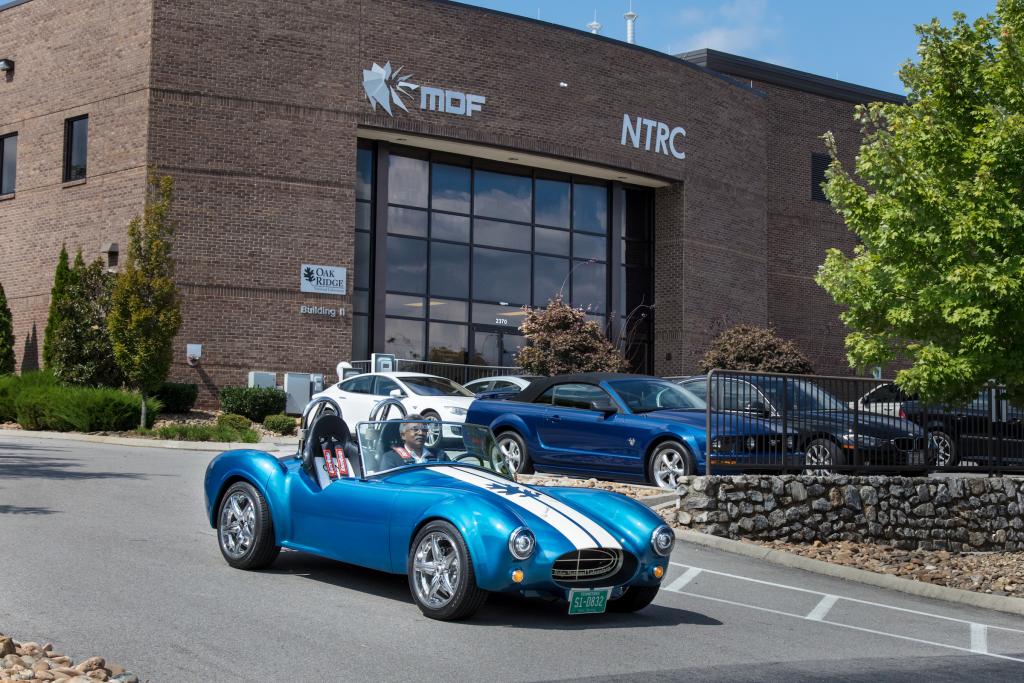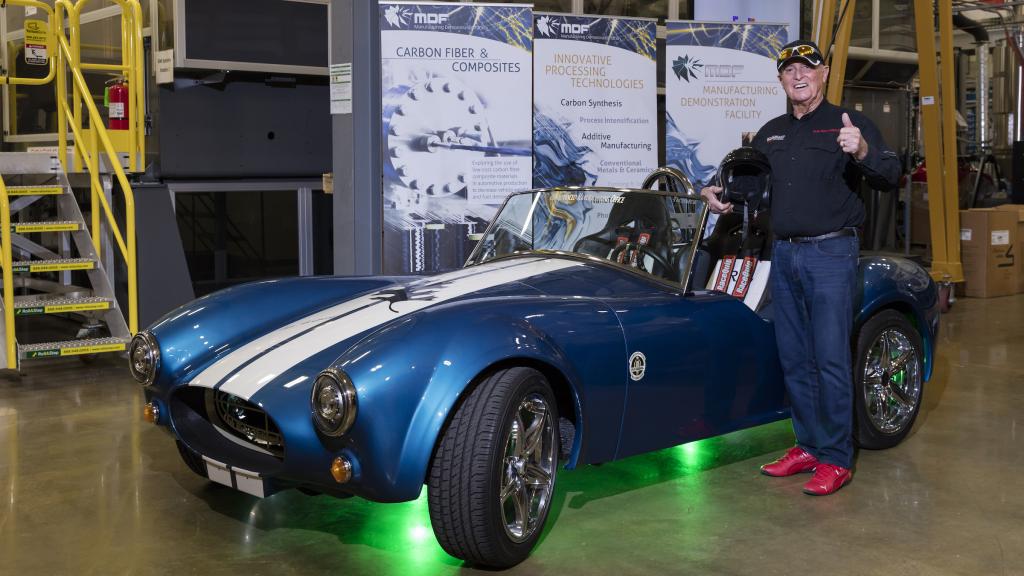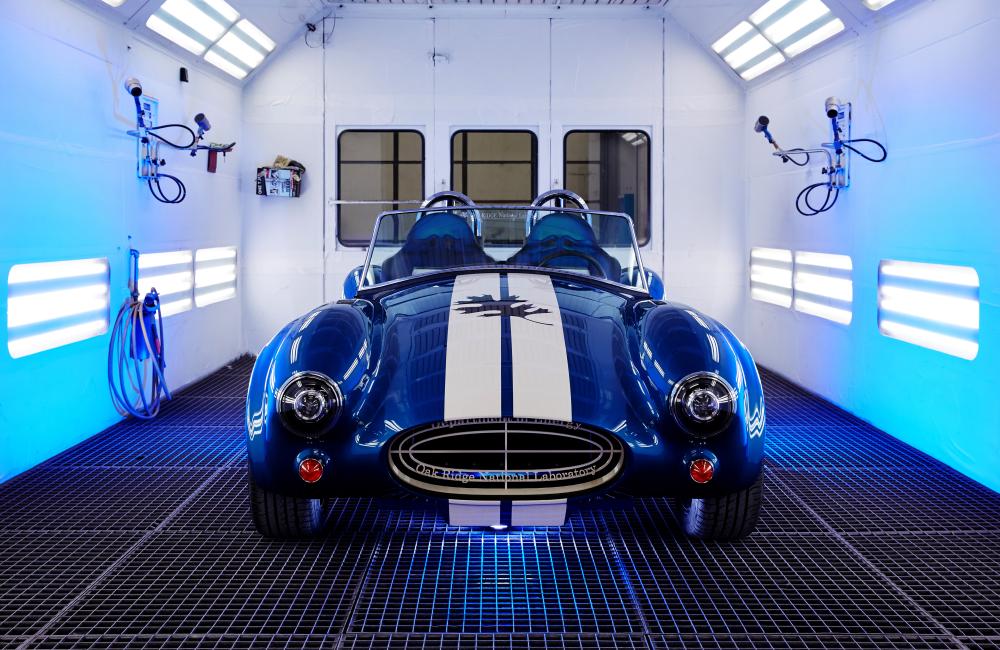ORNL, NASA showcase Shelby Cobra and advanced manufacturing at Talladega
When race fans convene on Talladega, the legendary motor speedway in Alabama the last weekend in April, they’ll have the opportunity to view a classic sports car turned into a 3D printed laboratory on wheels. The Shelby Cobra, produced by the Department of Energy’s Manufacturing Demonstration Facility (MDF) and National Transportation Research Center at ORNL, will be part of Talladega’s fan zone, a highlight of racing festivities April 26-28.
Race fans will have the opportunity to talk to researchers about how the Cobra was produced and learn more about the role advanced manufacturing plays in transportation. The Cobra is appearing at Talladega in partnership with NASA’s Marshall Space Flight Center. NASA has a keen interest in 3D printing, having deployed a 3D printer aboard the International Space Station and successfully produced a printhead faceplate to investigate how additively manufactured materials perform in space. NASA has qualified 3D printing to aid in the application of the thermal protection system for the powerful deep space rocket, Space Launch System.
ORNL has collaborated with engineers from Marshall Space Flight Center in Huntsville, Alabama, and used neutrons to help understand the potential benefit of printed rocket engine components. The team studied residual stress in additively manufactured materials to qualify them for flight.
Advanced manufacturing is integral to our nation’s supply chain, impacting transportation, aerospace, and even deep space exploration. It’s exciting to see how rapidly additive manufacturing is changing and becoming a mainstream technology.
“We look forward to celebrating the achievements that have been made in 3D printing by showcasing the Shelby Cobra at Talladega,” said Lonnie Love, Corporate Fellow and group leader for ORNL’s Manufacturing Systems Research. “Advanced manufacturing is integral to our nation’s supply chain, impacting transportation, aerospace, and even deep space exploration. It’s exciting to see how rapidly additive manufacturing is changing and becoming a mainstream technology.”

DOE debuted the Shelby Cobra in 2014. The car was the first large object 3D printed using the BAAM™ (Big Area Additive Manufacturing) system, a machine co-developed by ORNL and Cincinnati Incorporated, which produces lightweight composite parts without the need for tooling. The Cobra has a 3D printed chassis and an electric powertrain. Of the car's 1,400 pounds (635kg), roughly 500 pounds (227kg) was 3D printed out of a strong composite material that contains 20 percent carbon fiber.
Over the past few years, the Cobra has traveled around the world, appearing at international automotive and manufacturing shows in Europe and throughout the United States. However, this is the first time the car has appeared at a NASCAR speedway. While the Cobra won’t be on the track at Talladega, the vehicle has been driven by a racing legend, Bob Bondurant, who raced the Shelby Cobra in the 1960s. Bondurant visited ORNL in 2016 and took the 3D printed version for a spin.

Since printing the Cobra, ORNL has used BAAM™ technology to 3D print a utility vehicle, excavator, submarine, and boat mold and has installed a second BAAM™ at the MDF that enables rapid development of bioderived materials including poplar, bamboo, flax and cellulosic fibers.
The Manufacturing Demonstration Facility at ORNL is supported by the Department of Energy’s Office of Energy Efficiency and Renewable Energy, Advanced Manufacturing Office. AMO supports early-stage research to advance innovation in U.S. manufacturing and drive U.S. economic competitiveness and energy productivity.
ORNL is managed by UT-Battelle for the Department of Energy's Office of Science, the single largest supporter of basic research in the physical sciences in the United States. DOE’s Office of Science is working to address some of the most pressing challenges of our time. For more information, please visit https://energy.gov/science.


